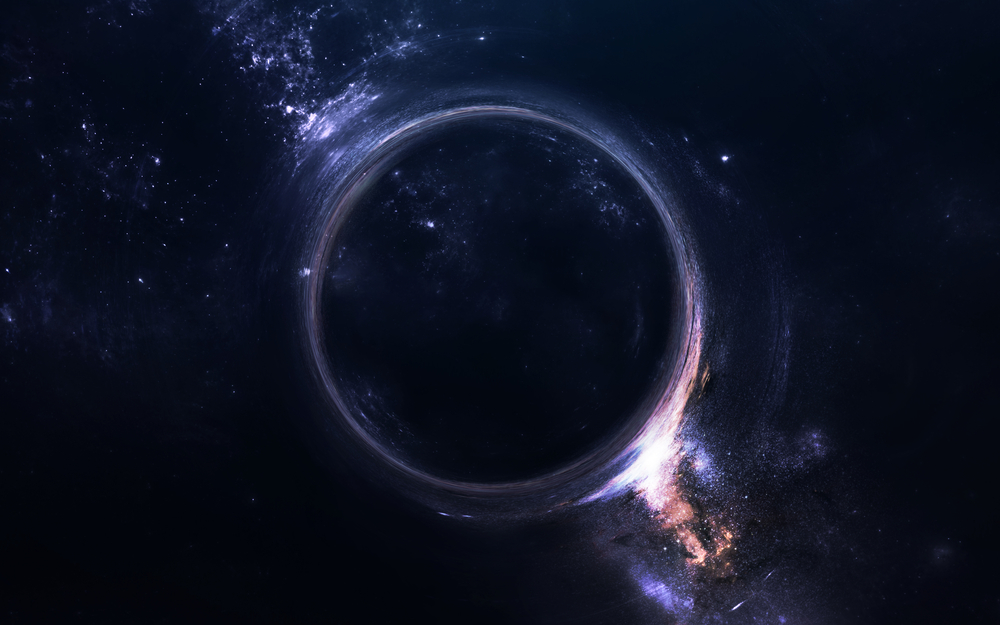Researchers Have Discovered An Enormous Black Hole at the Centre of Our Universe
Researchers have discovered an enormous black hole in the heart of the Milky Way galaxy. At 25 million times the mass of our sun, this monster is near as giant as it could be.

However, some smaller black holes may lurk closer to us and are currently undetected. These objects have a huge gravitational pull and can trap light or break it into constituent colours. Black holes are not difficult to find since they devour anything that ventures too close. However, finding one requires luck, persistence, and a lot of computing power. Here’s everything you need to know about the black hole discovered in our galaxy and what researchers know about these mysterious objects so far…
How do we know there’s a black hole?
For starters, we know it’s big. Like, big. Astronomers estimate that the newly discovered black hole has a mass of about 4 million suns. This makes it the most significant black hole ever discovered. Black holes, like all stars, emit light. The light from this black hole is faint, but it can be measured. Astronomers used an instrument at the Very Large Telescope in Chile to measure this light and concluded that the black hole was likely to be a monster. The discovery of the black hole was the result of a years-long quest. In 2011, a team of researchers published a paper that predicted the presence of a gigantic black hole in the centre of the Milky Way. They based their prediction on observations that suggested the Milky Way’s core was lighter than expected. The scientists concluded that a black hole with a mass of 4 million suns must be present.
What is a Black Hole?
The term “black hole” is misleading, as they are not black. Black holes are regions in space where gravity is so strong that not even light can escape. They form when massive stars die. The core of these stars collapses into a highly dense object called a neutron star or a black hole. Black holes come in different sizes. The smallest ones, called “stellar mass black holes,” have a mass equal to about three times that of the sun. The largest ones, “supermassive black holes,” have billions of times more excellent groups. Black holes are often found at the centre of galaxies. They are surrounded by a “corona” of rotating gas and stars, creating what is known as an “active galactic nucleus.”
Is that even possible?
Sure, but it’s scarce. One of the most striking features of black holes is that they are incredibly efficient at capturing matter. The gravitational force at the surface of a black hole is so powerful that even photons (light particles) are pulled in. This is called the “event horizon”; some black holes have event horizons with enough mass to swallow up entire planets. Black holes are so destructive that they have been compared to “eating spoons.” Once matter crosses the event horizon, there is no hope of escape. This is why black holes are so difficult to find. Since nothing can escape, not even light, they are entirely invisible.
Where is the black hole in the Milky Way?
As of now, it’s hard to say. The Milky Way black hole could be in any part of the galaxy. NASA and other research organizations are working hard to pin down the exact location of this black hole. Scientists believe the Milky Way’s black hole is either near the constellation Sagittarius or the bright radio source known as Sagittarius A* (pronounced “Sagittarius A Star”). Sagittarius A* is an enormous source of radio waves, and it is thought to be produced by the supermassive black hole at the centre of the Milky Way.
What will happen next?
One of two things must happen in the next few million years. The black hole will either grow more extensive, or it will lose mass. For the black hole to get bigger, its corona must pull in more matter. However, only a tiny amount of weight is available to be devoured. The halo would take many millions of years to swallow enough matter to grow larger. The black hole could also start to lose mass. It could spit out some of the issues if it ate a huge meal. If a big star passed near the black hole, it could be ripped apart by its gravitational force.
Summary
A black hole is an object with such a strong gravitational field that nothing, not even light, can escape it. A newly discovered black hole in the centre of the Milky Way is thought to be the most significant known black hole in the universe. Scientists found this black hole by measuring the light coming from the region. This discovery could help us better understand how our galaxy formed and evolved.



